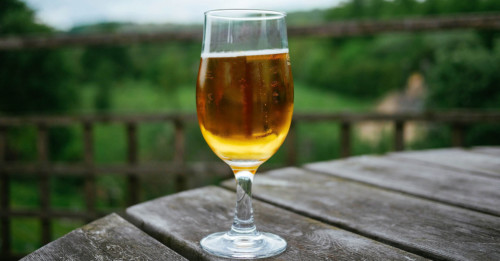Pale Ales take up some serious real estate in the beer world. You’ll probably encounter them pretty quickly in your foray into beer, and the style isn’t as simple as it may seem (for instance, not all pale ales are actually very pale). So what do you need to know? Long story short, what differentiates pale ale is moderate hoppiness (both medium bitterness and flavor) with balancing malt flavors. The idea is a beer that’s approachable but interesting, with each sip inviting you to try to discern individual elements—kind of like a beer Magic Eye? Styles vary, but the key is balance, with some room to play.
American Pale Ale Essential Info
- Color: Pale gold to amber
- ABV: 4%-6%
- Commercial Examples: Sierra Nevada Pale Ale, Stone Pale Ale, Dale’s Pale Ale
Think of an American IPA with the hops dialed way down. Whereas American IPAs tend to showcase the bitterness and bustin’ flavor of American hops (citrus, pine, fruit, florals, the list goes on), American Pale Ales balance hops with varying amounts of malt, which makes sense, since American Pale Ales were inspired by malt-forward English Pale Ales. Once the style reached the U.S., it was brewed with local products, which included yeast strains that produced fewer fruity esters, and strong, citrus-forward hops that appeal to the American beer drinking palate. Balance still reigns here, just cheating slightly hoppier. A highly popular, and extremely versatile, style of beer, good for food pairings, and definitely more approachable than an IPA for a beginner.
See The Belgian Pale Ale Page For Info About This Style!
English Pale Ale Essential Info
- Color: Golden to amber/copper
- ABV: 4.6%-6.2%
- Commercial Examples: Fullers ESB, Boddingtons Pub Ale, Bass Pale Ale
English Pale Ale is basically (sort of, kind of) the same as a beer style known as “Extra Special Bitters” (English “bitters” beer styles range from “Standard” to “Premium” to “Special”). Don’t let the term “bitter” fool you, though, this ain’t no IPA (it’s just bitter compared to an English Mild, but we’ll get to that). English Pale Ales do showcase both the flavors and bitterness of hops (the hard water of Burton-on-Trent, where this beer style was born, helped bring out a slightly hoppier profile), but especially in the English variety, that’s usually tempered by maltiness. You can generally expect a range of faintly caramelly and/or bready malt notes against the characteristically earthy, floral, herbal, or resiny notes of English hops. But no, don’t expect to drink this at room temp. The Brits don’t actually do that.
